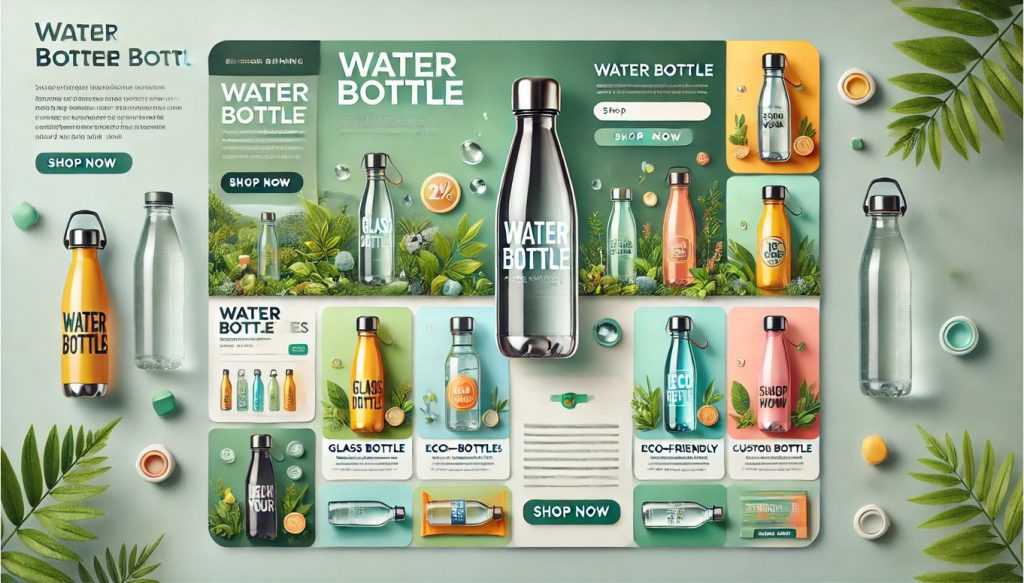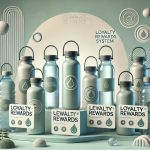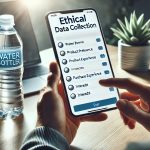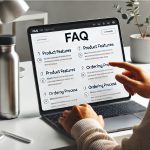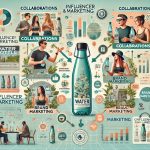Email marketing remains one of the most effective strategies for engaging with customers, nurturing relationships, and driving sales. For water bottle sellers, it is an essential tool for not only attracting new customers but also maintaining long-term loyalty with existing ones. With the right approach, email marketing can transform a simple water bottle purchase into an ongoing relationship, turning customers into repeat buyers, advocates, and brand ambassadors.
Understanding the Power of Email Marketing
The Importance of Email Marketing for Water Bottle Sellers
Email marketing is one of the most direct and personal ways to communicate with customers. Unlike social media or paid advertisements, emails allow businesses to create a customized and personalized experience for their audience. For water bottle sellers, this means reaching out to customers with tailored content that resonates with their interests, values, and preferences.
Building a solid email list is crucial for long-term success. When you nurture and engage this list effectively, you can maintain direct communication with customers and encourage repeat purchases. By utilizing email marketing strategically, water bottle sellers can also improve customer retention rates and create a more loyal customer base.
Key Benefits of Email Marketing for Customer Loyalty
Email marketing provides several benefits that are especially valuable for businesses in the water bottle industry. These include:
- Personalized Communication: With email marketing, you can segment your audience and send targeted, relevant messages. This personalization helps build trust and ensures that your customers feel valued.
- Repeat Purchases: Well-timed email campaigns, such as reminders about product replenishments or new product launches, can encourage repeat purchases and higher lifetime customer value.
- Brand Recognition: Consistent communication via email helps reinforce brand recognition. When customers regularly hear from you, they are more likely to think of your water bottle brand when making a purchase decision.
- Customer Engagement: Email allows you to connect with customers on a deeper level, sharing not just product updates, but also tips, useful information, and stories that build an emotional connection with your brand.
Building an Effective Email List
Organic List Building Strategies
To leverage email marketing effectively, a strong email list is essential. For water bottle sellers, the key to building an organic email list is to offer value and build trust with your audience.
Website Pop-ups and Signup Forms
An easy way to start building your email list is by incorporating pop-up forms and signup options on your website. For example, offering a discount on their first purchase for signing up for your newsletter can be a powerful incentive. Just ensure the pop-up doesn’t interrupt the shopping experience too much to avoid frustrating potential customers.
Including a prominent email signup field on the website homepage, product pages, and checkout pages can also increase sign-ups, ensuring you’re collecting emails at every point of customer interaction.
Offering Exclusive Content or Discounts
One of the most effective ways to grow your email list is by offering value in exchange for contact information. Water bottle sellers can create exclusive offers or content that entices visitors to subscribe. Consider offering a downloadable hydration guide, tips for staying hydrated, or exclusive access to seasonal discounts for customers who sign up. This not only helps you collect emails but also builds trust with your audience by providing them with something of value.
Social Media Promotion
If your business has a strong social media presence, use these platforms to promote your email list. Encourage followers to join your newsletter by highlighting the benefits they will receive—whether it’s early access to new products, exclusive offers, or valuable content. You can also run social media giveaways, where entry requires joining your email list, further expanding your reach and customer base.
Avoiding Purchased Email Lists
While it may be tempting to purchase an email list to jump-start your marketing efforts, this practice can lead to poor engagement, low deliverability rates, and even spam complaints. Purchased lists usually contain contacts who have no prior relationship with your brand and may view your emails as unwanted, causing higher unsubscribe rates and damaging your reputation.
Instead, focus on building your email list organically with people who are already familiar with your brand and products. This ensures that you’re reaching people who are more likely to engage with your emails, leading to better results and stronger customer relationships.
Segmenting Your Email List
The Power of Segmentation
Email segmentation allows you to send more targeted, relevant messages to specific groups within your email list. By dividing your customers into categories based on their behaviors, interests, and purchasing history, you can tailor your email campaigns to meet their unique needs. Segmentation ensures that your emails don’t feel generic, but instead resonate with each individual customer, ultimately increasing engagement and loyalty.
Behavioral Segmentation
Behavioral segmentation is based on how customers interact with your brand. For example, you can segment your list based on the following behaviors:
- Past Purchases: Create segments for customers who have bought specific water bottle styles or products. You can send follow-up emails offering complementary products or discounts on their next purchase.
- Email Engagement: Track how recipients interact with your emails. Segment those who open and click through emails more frequently and send them exclusive offers or early access to new product launches to keep them engaged.
- Browsing Activity: If customers browse specific products on your website but don’t purchase, send them reminder emails with discounts or free shipping offers on those products. This “abandoned cart” or “browse abandonment” tactic can help encourage conversions.
Demographic and Geographic Segmentation
Understanding your customers’ demographics, such as age, location, and interests, can help you further refine your email marketing strategy. For example, you can create location-based segments to promote products relevant to particular climates or seasons. A water bottle brand selling insulated bottles might target customers in colder regions with messages highlighting how their bottles keep drinks warm for hours.
Demographic segmentation also helps you adjust the tone and style of your emails to match the preferences of different customer groups. Younger customers might respond better to more casual and humorous language, while older audiences may appreciate a more straightforward and informative approach.
Crafting Engaging Email Content
The Power of Personalization
Personalized email marketing has been shown to improve open rates and customer engagement significantly. When a customer feels that an email speaks directly to their needs or interests, they are much more likely to open it, read it, and take action. Personalization can go beyond simply addressing the recipient by their first name. You can also use information like past purchases, browsing activity, or location to craft more relevant content.
For water bottle sellers, personalizing emails based on past purchases can lead to highly relevant recommendations. For example, if a customer has previously bought a certain type of bottle, you can suggest complementary items, such as accessories like bottle holders, cleaning brushes, or caps.
Crafting Compelling Subject Lines
The subject line is the first thing customers see when they receive an email, so it’s crucial to make it engaging and enticing. An effective subject line should be concise, clear, and create a sense of urgency or curiosity.
For water bottle businesses, you can use subject lines that highlight exclusive offers, new arrivals, or benefits:
- “Get Your Hydration Game On – New Bottles Just Dropped!”
- “Stay Hydrated with 20% Off Your Next Purchase”
- “Limited-Time Offer: Free Shipping on Orders Over $50”
A/B testing subject lines can also help determine what works best for your audience, ensuring that your emails achieve the highest possible open rates.
Creating Valuable Content for Loyalty
Email marketing is an opportunity to nurture customer relationships beyond product promotions. Offering valuable content that aligns with your brand’s mission and values will help deepen customer loyalty. For water bottle sellers, educational content about health, hydration, and sustainability is an effective way to build trust.
Consider sending:
- Hydration Tips: Email newsletters can offer helpful tips for staying hydrated, along with the benefits of reusable water bottles.
- Sustainability Insights: Share information on how using reusable bottles can help reduce plastic waste, along with facts or infographics on the environmental impact of disposable plastic bottles.
- Fitness and Wellness Content: If your brand is targeting fitness-conscious customers, send workout tips or hydration routines that emphasize the role your products play in their fitness journey.
The key is to make your emails feel valuable to your customers, not just like a sales pitch.
Building Customer Loyalty Through Email Automation
Setting Up Welcome Emails
The first impression counts, and a well-crafted welcome email sets the tone for future interactions with your brand. When a customer subscribes to your email list or makes their first purchase, send them a welcome email that thanks them for their interest and introduces them to your brand.
This email should include:
- A thank-you message for signing up or making a purchase.
- A brief overview of your brand’s mission and values.
- A discount code or offer for their next purchase.
- Links to your most popular products or helpful resources.
A personalized and thoughtful welcome email will make customers feel appreciated and encourage them to make a second purchase.
Implementing Cart Abandonment Emails
Cart abandonment is a common issue in e-commerce, and email marketing can help you recover lost sales. By setting up an automated cart abandonment email series, you can reach out to customers who have left items in their shopping cart without completing the purchase.
A typical abandoned cart email series might look like this:
- First Reminder: A gentle reminder that they left items behind, offering a discount or free shipping to incentivize the purchase.
- Second Reminder: A second email emphasizing the value of the products they left behind, with testimonials or user-generated content to build trust.
- Final Reminder: A last call with an even more enticing offer, such as an additional discount or bonus product, before the cart expires.
By implementing cart abandonment email sequences, you can recapture a significant portion of lost sales.
Sending Post-Purchase Follow-Ups
Post-purchase emails are an essential part of the customer lifecycle. After a customer has bought a water bottle, follow up with a thank-you email that includes:
- An order confirmation and tracking details.
- Instructions on how to care for the product or features to get the most out of it.
- A request for feedback or a product review.
- A discount on their next purchase, encouraging them to return.
This helps keep the conversation going with your customers and ensures they have a positive experience with your brand, increasing the likelihood of repeat business.
Measuring the Success of Your Email Campaigns
Analyzing Email Metrics
To optimize your email marketing efforts, it’s important to track key metrics that show how well your campaigns are performing. For water bottle businesses, some essential email marketing metrics to monitor include:
- Open Rates: The percentage of recipients who open your email. A higher open rate suggests that your subject lines and content are resonating with your audience.
- Click-Through Rates (CTR): The percentage of recipients who click on a link within your email. This indicates how well your content is driving action.
- Conversion Rates: The percentage of recipients who complete a desired action, such as making a purchase. This is the ultimate goal of any email campaign.
- Unsubscribe Rates: If customers unsubscribe from your list after receiving an email, it may indicate that your content isn’t meeting their expectations or that you’re sending too many emails.
By regularly reviewing these metrics, you can adjust your email campaigns to better meet the needs of your customers and improve your overall email marketing strategy.

